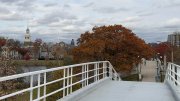For Leo Koerner ’26, it started with the pandemic.
As a sophomore in high school when COVID-19 hit, he watched government officials insist on mask mandates, lockdowns, and school closures—despite a lack of certainty over such policies’ effectiveness.
“You told a bunch of kids who were in the most important social time of their life that they had to stay inside for two years,” Koerner says. It felt like “a total overreach.”
By the time he arrived at Harvard in 2022, Koerner was disillusioned by more than just public health policies. He was distrustful of both political parties, he says, and skeptical that his generation could achieve the American dream of a stable job, a family, and a comfortable retirement.
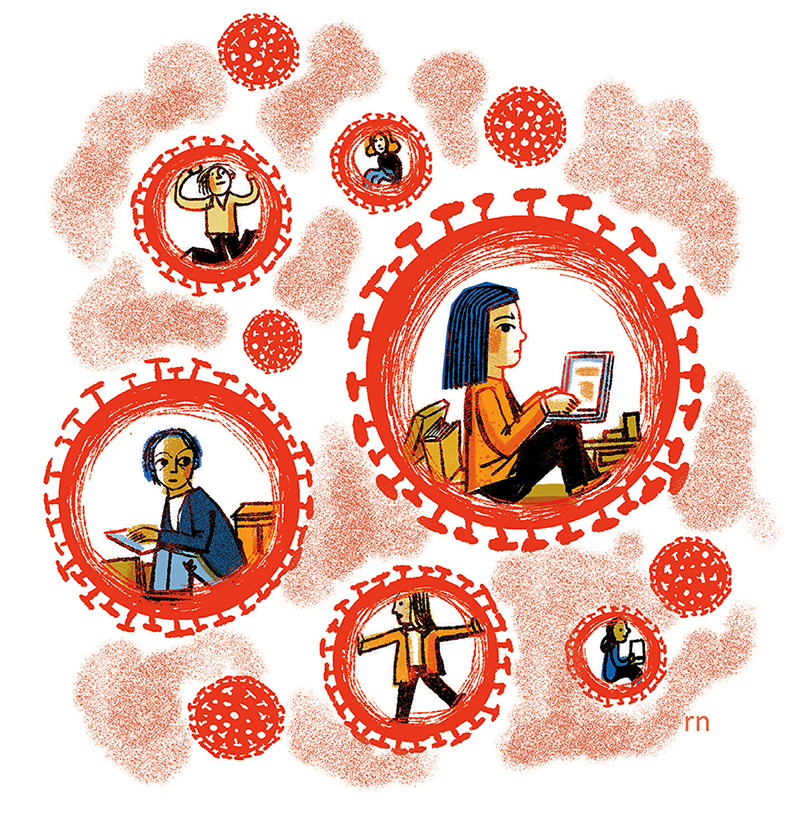
Koerner was raised in deep-blue Cambridge, Massachusetts, surrounded by liberal neighbors and peers. He began to wonder whether conservatism might hold the answers he hadn’t found growing up. So he started to attend meetings of the Harvard Republican Club and the John Adams Society, the University’s conservative debate society. In the classroom, he immersed himself in the Western canon—from Plato’s Republic to Pope Leo XIII’s Rerum Novarum, the Catholic encyclical that critiques both socialism and unregulated capitalism. In the midst of his undergraduate studies, he converted to Catholicism.
Today, Koerner is the president of the Republican Club—notorious, lately, for its full-throated support of President Donald Trump, its shift to a populist brand of conservatism that might come from the mouth of Vice President J.D. Vance, and its increasingly prominent place on campus.
When Koerner was a freshman, he says, the club might have drawn 20 to 30 people to an event featuring a conservative speaker. Now, such events can attract over 100 students. In a 2024 Crimson op-ed, Michael Oved ’25, Koerner’s predecessor, declared that “it has never been a better time to be a Republican on campus” and wrote that the club’s mailing list had grown from 100 to over 800 during his tenure.
Harvard, like many American universities, has long been seen as a bastion of liberalism. In its attacks on the University, the Trump administration has often pointed to a lack of ideological diversity on campus—a charge that even Harvard’s own leadership has conceded, at least in part, by launching formal efforts to address it.
But whatever you think you know about the politics of Harvard’s faculty, its student body is an increasingly different story—one that reflects a broader shift in Gen Z politics. In poll after poll, the youngest members of Gen Z have shown a surprising conservative tilt. In the last presidential election, a Democratic polling group found, white men under 20 voted for Trump at higher rates than those in their late-20s—and at higher rates than white baby boomer men. And the latest Yale Youth Poll revealed a whopping 18-point partisan gap between voters aged 18 to 21—who leaned Republican by 11.7 points—and those aged 22 to 29, who leaned Democrat by 6.4 points.
In April, a theory about this shift went viral on X.
“I said it before and I’ll say it again,” Rachel Janfaza ’20, an analyst focused on youth politics, wrote. “There really are two Gen Zs.” Her post included a graphic contrasting “Gen Z 1.0,” the liberal-leaning older cohort, with “Gen Z 2.0,” their younger, more conservative peers.
According to Janfaza, the pandemic marked a dividing line. Older Gen Zers were in college when it hit, able to quarantine with roommates and friends; younger ones were still in high school, isolated at home. The two cohorts also came of age in different political climates: Gen Z 1.0 came up during Trump’s first presidency, when resistance meant protesting at the Women’s March or walking out of school for climate action. Gen Z 2.0 grew up under President Joe Biden—disillusioned with institutions, skeptical of pandemic rules, and more likely to lean into contrarian conservatism.
Now, Gen Z 2.0 is filling college campuses around the country, including at Harvard. They’re revitalizing conservative institutions, shifting the boundaries of campus discourse, and getting ready to shape national politics.
Mapping a Generation’s Divide
Growing up in Weston, Massachusetts, Rachel Janfaza was constantly discussing politics and current events with her three younger siblings. She was born in 1997, and her youngest sister in 2003. Even though their age difference was just a few years, Janfaza could sense micro-generational rifts throughout her childhood.
Janfaza’s first phone was a flip phone; her sister’s first phone was an iPhone. Janfaza followed the Barack Obama-Mitt Romney election as a freshman in high school; her sister can barely remember a political world before Trump.
“I have always felt that the four of us have had very different political experiences,” Janfaza says, “even though we are so close in age.”
At Harvard, Janfaza concentrated in government. For her senior thesis, she examined social media’s role in youth activist movements—including immigration activism, the pre-pandemic Black Lives Matter movement, March for Our Lives, and climate strikes. She analyzed how social media enabled young people to lead these movements, how activism on platforms like Snapchat and Facebook translated into offline protest, and how algorithms incentivized the spread of disinformation.
She submitted that thesis in March 2020, just before students were sent home for the pandemic. “The thesis was outdated the moment I handed it in,” she says: immediately, the pandemic “bifurcated Gen Z” and transformed how young people consumed social media.
After graduating that May, Janfaza began covering the youth vote for CNN. As she spoke to young people across the country, she noticed that Gen Z’s politics didn’t map cleanly onto traditional party lines. She remembers interviewing an 18-year-old woman in Nebraska who was passionate about reproductive rights—but said she supported Trump, believing he would help bring back jobs for her and her family.
“They’d take a little from the Democratic Party, a little from the Republican Party,” Janfaza says. Instead of party loyalty, “they cared about the issues that were affecting their lives,” especially as they related to the economy.
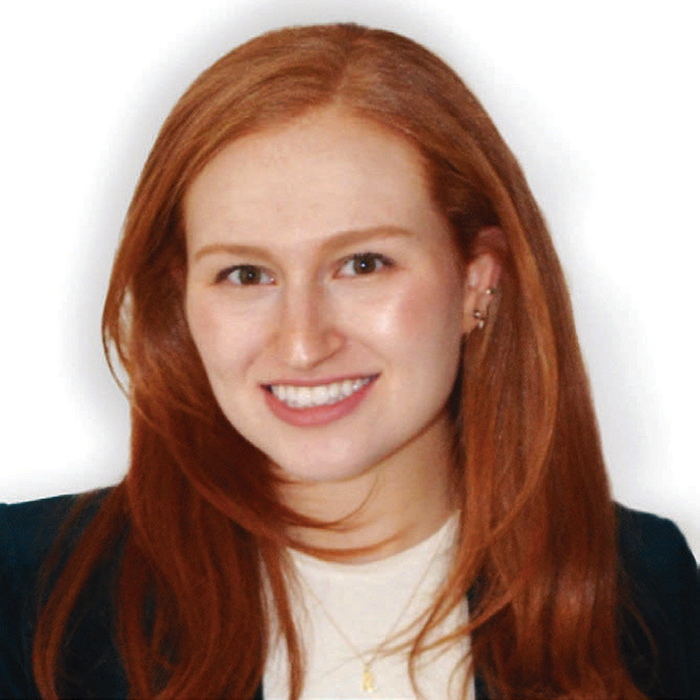
“The pandemic bifurcated Gen Z...this cohort of young people who were either in high school or middle school during the pandemic grew really frustrated with authority.” —Rachel Janfaza
At the same time, the pandemic was changing how young people used social media. As they quarantined at home, many began scrolling on TikTok for the first time. That app rewarded “unfiltered, often controversial” takes, Janfaza says, in contrast to the polished, curated posts that had defined Instagram for older Gen Zers.
In this new media environment, contrarian creators who pushed back on pandemic restrictions found eager audiences. And TikTok’s hyper-specific algorithm, Janfaza argues, deepened ideological and identity-based divides, particularly around gender. YouTube also grew in popularity among young viewers seeking fewer content restrictions after Twitter and Facebook banned Trump from their platforms in the wake of the January 6, 2021, riots.
In the fall of 2022, Janfaza left CNN and launched The Up and Up, a Substack newsletter dedicated to Gen Z politics. She now works full-time consulting organizations on connecting with young people. In late 2022, shortly after the midterm elections, she partnered with John Della Volpe of the Walton Family Foundation and Murmuration and crisscrossed the country, interviewing young voters about their views.
She found that the patterns she first noticed in 2020 had accelerated. Young people still prioritized the economy over culture war debates. But the economic policies they supported were starting to sound different. They were receptive to tariffs and isolationist policies. Some backed an expanded social safety net. Many were also becoming religious.
None of this mapped neatly onto a political party—but it clearly pointed to a kind of realignment and a desire to protest against the status quo.
The trends she was seeing showed up in the data. According to the Harvard Youth Poll released in the spring of 2024, Biden led Trump in the presidential race by 26 points among 25- to 29-year-old likely voters—but that number shrank to just 14 points among 18- to 24-year-olds. The gap between older and younger Gen Z voters held even after then-Vice President Kamala Harris replaced Biden as the Democratic nominee.
When the election results tracked what the earlier polling had revealed, Janfaza named this pattern “two Gen Zs.” The theory has since been picked up by Vox, Politico, Axios, and others trying to understand the political realignment happening among young people.
The Harvard Republican Club’s Transformation
Harvard students—like most college students nationwide—still lean broadly to the left. A Crimson survey from the spring of 2025 found that 64 percent of that year’s graduating class identified as progressive or very progressive, compared to just 10.5 percent who saw themselves as conservative or very conservative. Another 24 percent identified as moderate. Still, students say the contours of being a conservative on campus have changed—and that there is less shame associated with holding pro-Trump views than students experienced eight years ago.
On November 5, 2024, when the Institute of Politics hosted its election night watch party in Sanders Theatre, the rows of wood-paneled booths were filled to capacity. Among the sea of students, a small but vocal group donned red MAGA hats. They weren’t a majority—but they felt no need to hide.
That fall, “people who weren’t traditionally interested [in Republican politics] became interested,” says Koerner, the Harvard Republican Club president. “The energy built up and built up and built up—and then we won.”
It was a marked transformation from the election night of eight years earlier. In 2016, the Harvard Republican Club, known on campus as HRC, had famously refused to endorse Trump, calling him a “threat to the survival of the Republic.” At the 2016 Institute of Politics watch party, when Trump defied expectations, many Republican Club members were as stunned as their Democratic classmates.
“A rumor came out the next day that there was some secret Trump watch party that was happening at one of the other houses, that was kind of underground,” recalls a former HRC member. “It was almost like a scandal—like, who was at that watch party?”
But over time, the club’s stance towards Trump softened. Wesley Donhauser ’21, who served as the HRC president when the organization endorsed Trump in 2020, traces the shift partly to familiarity. When Donhauser arrived on campus in 2017, the notion that Trump was president was still hard to believe. By 2020, Trump was an incumbent with proven electoral appeal.
The change was also driven by a transformation in what it meant to be a conservative, Donhauser says. When he was a freshman, he continues, campus Republican identity centered around “this fiscally conservative, socially liberal kind of mantra.”
But for Donhauser—who grew up Catholic—conservatism was rooted in a belief “that there is an enduring moral order, and that it is the duty of one another to bind each other to said order.” He viewed society’s purpose not as maximizing “individual freedom or choice” but as helping people “fulfill their responsibilities to each other and the greater good.” And an increasing number of students agreed with him: “As time went on,” he says, “there was a greater willingness to defend conservative and religious social issues.”
By 2020, the Harvard Republican Club was deeply divided over whether to endorse Trump. Ultimately, they did—not out of affection for his personality, Donhauser says, but because of his willingness to champion culturally conservative values.
Those priorities, he says, were reshaping the party’s economic agenda as well. Take immigration. Studies have consistently shown that it boosts economic growth: “It’s hard not to be positive for the GDP,” Donhauser says. “It’s a lot of fantastic, hardworking people.”
But in his view, rapid, large-scale immigration puts a strain on local communities—especially by driving down wages. For Donhauser, then, restricting immigration is a way to prioritize working-class Americans over abstract metrics like gross domestic product.
That logic reflects a broader shift in conservative thinking, as he sees it. It’s no longer about “money and business interests,” he says, but about constructing a social order that can sustain families and communities. “We thought the conservative social order led to better outcomes for people.”
Harvard’s New Conservatives
When he arrived on campus in 2021, Michael Oved ’25 sensed there was something below the surface of Harvard’s liberal varnish. There was a growing appetite, he felt, for conservative voices and spaces—at least among students. He began “testing the waters” by offering right-of-center opinions in class, then watching as classmates approached him afterward to say they had similar thoughts.
“There are more conservatives than meet the eye,” he realized.
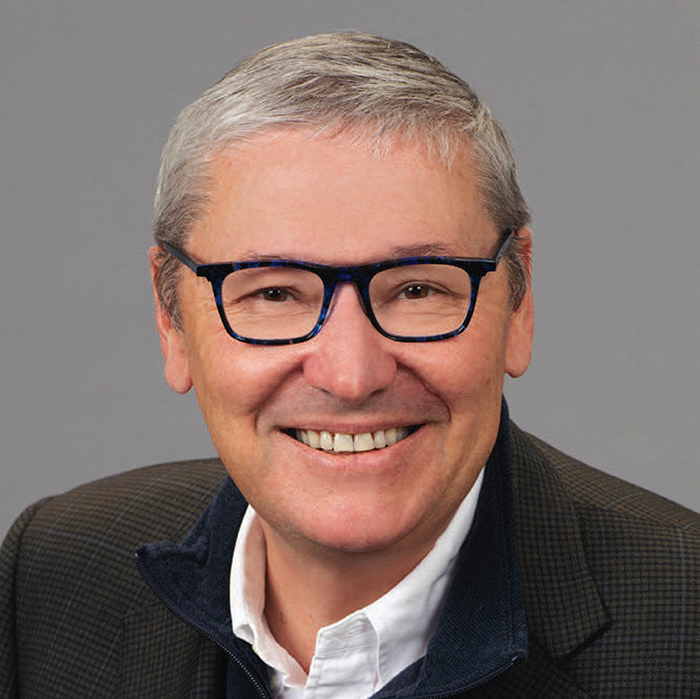
“I was taken aback by how they really bought into a lot of the Trump rhetoric... They were obviously much more nationalistic in their economic policy.” –N. Gregory Mankiw
Oved understood, though, that this conservatism wasn’t the traditional Republicanism of past decades. It encompassed a wide—and often contradictory—range of views: tech evangelists and tech skeptics, deficit hawks and those who wanted to expand the social safety net.
“The Republican Party is not a monolith,” he says. “The beauty of the Republican Party is the difference of opinions within it.”
So he started to invite a wide array of speakers to HRC events—Peter Thiel, Palantir cofounder Joe Lonsdale, Babylon Bee CEO Seth Dillon—not to try to achieve consensus, but to open a space for people to discuss and develop their views.
Another speaker Oved invited was his freshman seminar professor, Beren professor of economics N. Gregory Mankiw. A longtime Republican who had advised President George W. Bush and presidential nominee Mitt Romney, Mankiw publicly left the party in 2019, writing that it had “largely become the Party of Trump.”
He had visited the Harvard Republican Club once before, about two decades earlier, and remembered students sounding a lot like him: fiscally conservative, socially liberal.
He quickly realized that was no longer the case.
The ideological makeups of Harvard faculty and students often diverge. In a 2023 Crimson survey, just 3 percent of faculty identified as conservative or very conservative, compared to 12 percent of students who identified the same way. Meanwhile, 77 percent of faculty identified as liberal or very liberal, compared to 65 percent of students.
“I was taken aback by how they really bought into a lot of the Trump rhetoric,” Mankiw remembers. He was especially struck by their economic beliefs: “They were obviously much more nationalistic in their economic policy—leaning to isolationism and nativism,” he says, “which I personally don’t think is a healthy place for the country to be.”
Before the 2024 election, HRC released an endorsement of Donald Trump that expressed no reservations. A 2,000-word document, complete with 41 citations, laid out the group’s rationale—including Trump’s tax cuts and deregulation, his non-interventionist foreign policy, and his success in appointing conservative judges. “The goal,” Oved says, “was to educate our peers.”
For him, the endorsement was the culmination of his work to reestablish the club’s stature on campus. As the oldest collegiate Republican group in the country, HRC is a key player in Republican youth organizing, Oved says. But he feels that it had been adrift since its 2016 refusal to endorse Trump. “During my tenure as president of the Republican Club, we revived the organization,” he says. “We brought it back to its glory.”
The conservative resurgence has extended beyond HRC. In 2021, Harvard students revived The Salient, a once-dormant conservative campus magazine. The Abigail Adams Institute—an independent intellectual center devoted to the Western tradition, located near campus but not affiliated with Harvard—has also seen rising attendance at its events, its director recently told The New York Times.
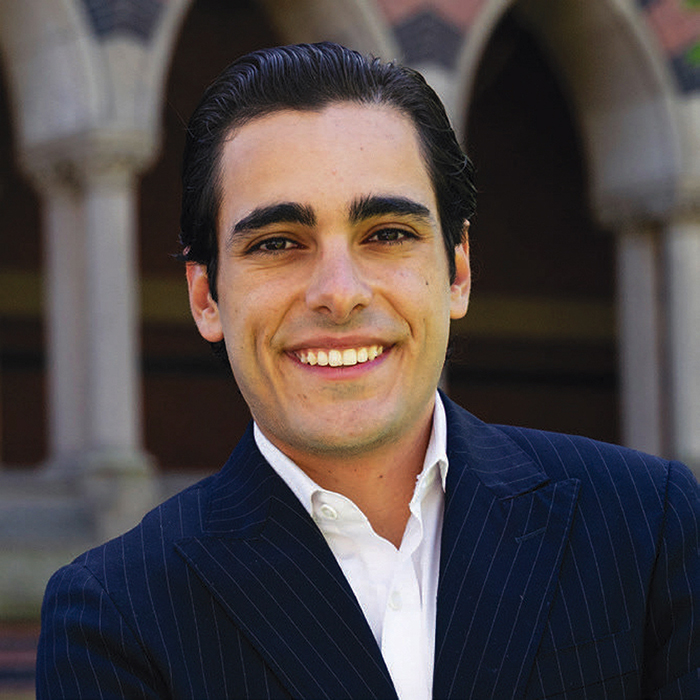
“There are more conservatives [at Harvard] than meet the eye.” –Michael Oved
As the tent expands, for many students, social conservatism—often shaped by religion—remains its center. Leo Koerner, the current HRC president, says many of his beliefs are drawn from Catholic social teaching—for example, that the government should help build a society centered around purpose and meaningful work.
“Having strong social safety nets—and providing support to help people feel like their lives have meaning—is good,” he says. He provides tariffs as an example: “If we tariff China or any other country and bring home 10,000 jobs, but it costs the GDP X amount, that’s worth it, because the GDP is not the soul of the nation.”
Still, it can be hard to tell how much of the campus shift reflects deeply held beliefs and how much stems from students modulating their views to match the version of conservatism in power. In some cases, students’ turn toward New Right ideas may stem from a shortage of conservative perspectives among Harvard’s faculty: without a broader range of competing alternatives, they may gravitate towards what is most visible or ascendant.
Kenan research professor of government Harvey Mansfield, who was one of Harvard’s few conservative faculty members until his retirement in 2022, is sharply critical of what he sees as the University’s failure to prioritize intellectual diversity on the faculty—including diversity within the conservative movement.
He points to the recent rise of “common-good conservatism,” championed by Harvard Law School professor Adrian Vermeule. That philosophy argues, as Vermeule wrote in The Atlantic in 2020, “that strong rule in the interest of attaining the common good is entirely legitimate”—an idea echoed by many current conservative Harvard students.
“[Common-good conservatism] is very hostile to liberalism—too much so, in my opinion,” Mansfield says. “It wants conservatives to define a ‘common good’ which excludes liberals. To me, I wonder whether that means they’re no longer going to have elections in which the other side can win. My conservatism tries to be compatible with losing an election and letting the liberals have their turn when they win.” If there were more conservative faculty on campus, Mansfield suggests, students might be exposed to more of these internal debates.
In recent years, Harvard has made a visible effort to foster greater intellectual diversity on campus. After the October 7, 2023, Hamas terrorist attacks on Israel, Israel’s subsequent war in Gaza, and the campus unrest that followed, the University began prioritizing “intellectual vitality” by funding student projects and hosting events centered on difficult or divisive topics. In July, The Wall Street Journal reported that, amid pressure from the Trump administration, Harvard has also explored the creation of a center for conservative scholarship.
Some students are skeptical about the intentions behind such changes. “I think it’s remarkable, the sudden interest,” Koerner says. “The institutional support is certainly opportunistic and relies on what the outside pressures are.” Still, he thinks the effect will be positive, regardless of the motivation—making space for a wider range of views on campus.
The Future of Gen Z 2.0
Notwithstanding such institutional efforts, in many ways, students feel they’re doing just fine on their own. For as long as they can remember, the younger members of Gen Z have watched the country grow more politically divided, with adults drifting to extremes on both sides. But paradoxically, many say that this environment has made them more committed to civil discourse—not less.
In past eras, left-leaning students drew conservative ire for treating speech as harm: shutting down controversial speakers, insisting that certain views posed material harm to marginalized students. But for some younger Gen Zers, that mindset no longer holds sway.
Tenzin Gund-Morrow ’26, a co-president of the Institute of Politics and a longtime progressive, remembers the distress he felt when Trump won the 2024 election. He was worried, he says, for undocumented students and other vulnerable groups. But that never translated into believing Trump’s policy ideas shouldn’t be heard.
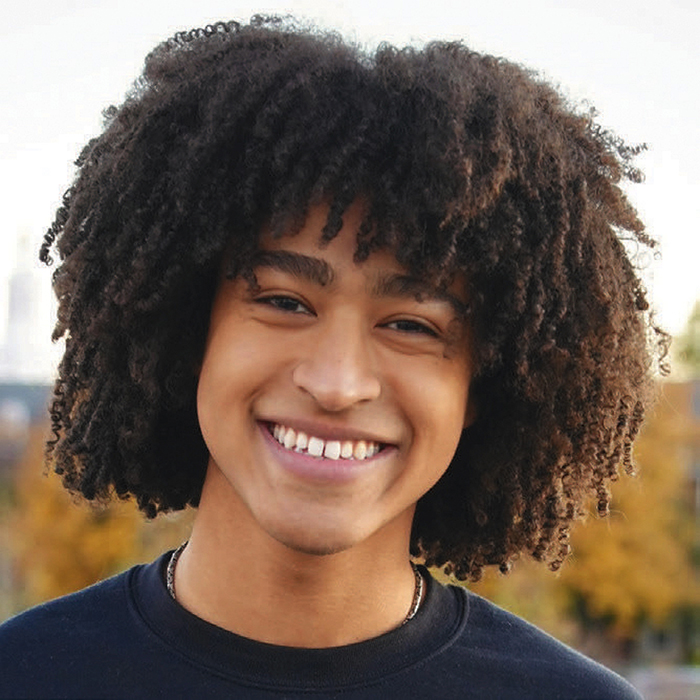
“A lot of the media portrays Harvard as so polarized that no one’s willing to talk. But in reality, many, if not most, students want to hear more dissent on campus.” –Tenzin Gund-Morrow
“It really doesn’t help anyone to shut someone else down,” Gund-Morrow says. “If you don’t listen thoughtfully and respond in kind, people just radicalize further.”
That belief is increasingly reflected in how students approach campus conversations. Last semester, the far-right blogger Curtis Yarvin came to Cambridge to debate political theorist Danielle Allen, the Conant University Professor. No one shouted him down. Allen herself questioned whether Yarvin’s ideas were worth engaging with—but acknowledged that they were popular and needed to be confronted.
For Koerner, the fact that the event took place at all was a sign of progress. “That shows a major change,” he says, “the fact that that type of debate happened at Harvard.”
Students say they value such conversations not for the sake of performance—to prove that they can engage across difference—but for the purpose of making progress on issues they care about, especially material ones. That desire for bipartisan dialogue, Janfaza says, is something she’s seen across the country.
“When I ask young people what worries them most, so many say divisiveness,” she explains. “They’re frustrated that the two parties are so far apart. They want space for conversation in the middle.”
At Harvard, students are finding ways large and small to have those conversations. The Institute of Politics has launched new initiatives focused on dialogue and debate. And individual students are talking to each other, too.
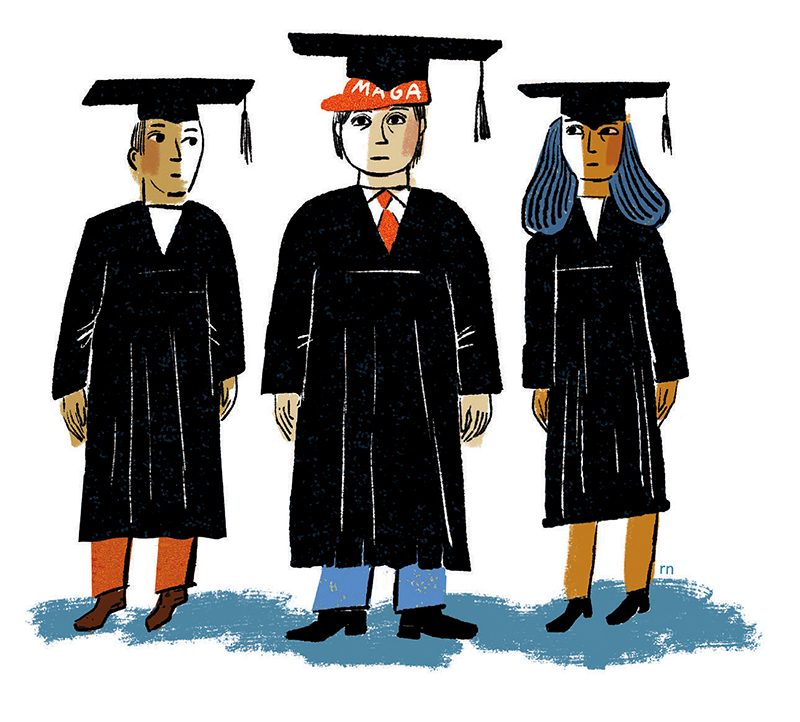
Tenzin Gund-Morrow and Leo Koerner first met as high schoolers, at the School for Ethics and Global Leadership, a semester-long residential academic program. “I was lucky enough to come here with a friend who slept five feet from where I was sleeping for an entire semester, who has entirely different opinions on immigration and on many issues in politics from me,” Gund-Morrow says. During the program, they learned to listen to each other and consider opposing views. At Harvard, they still get lunch together and cohost events like the annual Visitas Democrat-Republican debate.
Despite national narratives of division, Gund-Morrow says, many Harvard students engage across ideological lines with more ease than people might expect.
“A lot of the media portrays Harvard as so polarized that no one’s willing to talk,” he says. “But in reality, many, if not most, students want to hear more dissent on campus.”

